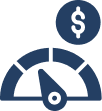Subtotal $0.00
Elevate your day trading skills with MegaCap Academy – start today and unlock tomorrow's success!
Jumeirah Bay X2, JLT Cluster X (Jumeirah Bay Towers), Jumeirah Lake Towers (JLT), Dubai
Swiss 1206 Geneva,rue de l'Athénée 32
Elevate your day trading skills with MegaCap Academy – start today and unlock tomorrow's success!
Jumeirah Bay X2, JLT Cluster X (Jumeirah Bay Towers), Jumeirah Lake Towers (JLT), Dubai
Swiss 1206 Geneva,rue de l'Athénée 32
Navigate the dynamic world of index trading with MegaCap. Discover our diverse range of major global indices and seize the opportunity to trade across leading markets, from the U.S. to Asia and Europe






Trading indices enables investors to speculate on the overall performance of stock markets or specific sectors without purchasing individual stocks. An index represents the collective value of a group of stocks, providing insights into the performance of a market or industry. This approach is favored for its simplicity and the opportunity to access broad market exposure through a single trade.
Trading indices offers the advantage of diversification by spreading risk across a variety of stocks instead of relying on individual company performance. It also provides broad exposure to market trends, giving traders a comprehensive view of overall market movements. Furthermore, indices trading serves as an effective way to gauge the economic health of specific sectors or entire economies.
In indices trading, a leverage ratio of 1:100 allows traders to control a position worth 100 times their initial investment. While this amplifies the potential for profits, it also increases the risk, especially in volatile market conditions.
Trading indices with leverage demands careful risk management due to the potential for quick and large price fluctuations. While high leverage can yield significant profits, it also exposes traders to the risk of considerable losses. It is crucial for traders to have a strong understanding of market analysis and to employ stop-loss orders and other risk mitigation strategies.

The ICE U.S. Dollar Index tracks the value of the U.S. dollar against a basket of six major global currencies. It serves as a key benchmark for assessing the international strength of the U.S. dollar and provides insights into the economic health of the United States on the global stage.

The FTSE 100 Index includes the 100 largest companies listed on the London Stock Exchange, ranked by market capitalization. It is widely regarded as a barometer for the performance of businesses governed by UK company law and serves as a key indicator of the UK's overall economic health.

The Dow Jones Industrial Average (DJIA), commonly known as 'The Dow,' is one of the oldest and most recognized stock indices, consisting of 30 major publicly traded companies in the U.S. It is frequently used as a key indicator of the overall performance of the U.S. stock market and the nation's economic health.

The S&P 500 Index offers a comprehensive representation of the U.S. equity market, comprising 500 of the largest American companies by market capitalization. It is widely considered the most reliable benchmark for large-cap U.S. stocks and serves as a key indicator of the overall health of the U.S. economy.

The DAX 30 Index includes 30 prominent German companies listed on the Frankfurt Stock Exchange. It is regarded as a key benchmark for the German stock market and offers insights into the economic performance of Germany.

The Nikkei 225, or Nikkei Stock Average, is a stock market index that tracks the performance of 225 leading companies listed on the Tokyo Stock Exchange. It serves as a key indicator of both the performance of Japanese equities and the overall health of the Japanese economy.

The NASDAQ Composite Index includes over 3,000 stocks, with a strong emphasis on information technology companies. Known for its high concentration of tech stocks, it serves as a key indicator of the technology sector and growth-oriented investments.

The CAC 40 Index tracks the 40 largest French companies listed on the Paris Bourse, ranked by market capitalization. It is widely regarded as a key indicator of the performance and economic health of the French stock market.